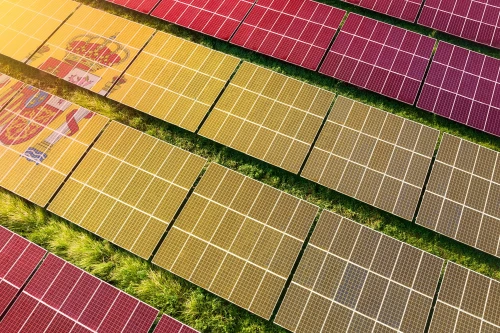
May 9th, 2025
Join our Italian Energy Day on 20 May – Book now
Understanding how humidity affects energy consumption can help homeowners and businesses optimise their heating and cooling systems, reduce utility bills, and maintain a comfortable indoor environment.

Humidity refers to the amount of moisture in the air. It’s typically measured as relative humidity, which indicates the percentage of moisture in the air compared to the maximum amount the air can hold at a given temperature. High humidity means there’s a lot of moisture in the air, while low humidity means the air is dry.
Humidity matters because it directly influences how we perceive temperature. For example, high humidity can make hot days feel even hotter, while low humidity can make cold days feel colder. This perception affects how much we rely on heating and cooling systems, impacting overall energy consumption rates.
Humidity affects energy consumption primarily through its impact on heating, ventilation, and air conditioning (HVAC) systems. These systems work to regulate both temperature and humidity levels to create a comfortable indoor environment. When humidity levels are not ideal, HVAC systems must work harder, leading to increased energy use.
In humid conditions, the air feels warmer than it actually is. This is because sweat evaporates more slowly, making it harder for your body to cool down. As a result, people tend to lower their thermostats, causing air conditioners to run longer and use more energy.
On the flip side, low humidity levels in colder months can make indoor environments feel colder than they are. Dry air causes moisture to evaporate from the skin more quickly, making you feel chilly. This leads to turning up the heat, which increases energy consumption.
High humidity levels can significantly raise energy costs, especially during the summer months. Here’s how:
Air conditioners not only cool the air but also remove excess moisture. When humidity levels are high, AC units must work overtime to dehumidify the air, leading to higher electricity bills.
Constantly running AC units to combat humidity can cause wear and tear on HVAC systems, reducing their efficiency over time and leading to potential maintenance costs.
Regions with consistently high humidity levels, such as coastal areas or tropical climates, often see higher energy consumption rates due to the increased demand for cooling.
While high humidity affects cooling, low humidity has its own set of challenges during colder months:
Dry air feels cooler, prompting people to raise their thermostat settings. This increased reliance on heating systems results in higher energy usage.
Low humidity can cause materials like wood to shrink and crack, potentially affecting insulation and making it harder to maintain a consistent indoor temperature.
Dry air can lead to dry skin, irritated sinuses, and static electricity, prompting people to use humidifiers, which also consume energy.
Maintaining optimal humidity levels can lead to significant energy savings. Here are some tools and techniques to help manage indoor humidity:
These devices are designed to regulate moisture levels in your home. Dehumidifiers are particularly useful in the summer to reduce the load on air conditioners, while humidifiers add moisture to the air during dry winter months, making it feel warmer without cranking up the heat.
Modern HVAC systems often come with built-in humidity controls. Investing in an energy-efficient HVAC system can help regulate both temperature and humidity more effectively.
Smart thermostats can automatically adjust temperature settings based on humidity levels, optimising energy use. Pairing these with humidity sensors ensures accurate monitoring and control.
Humidity plays a crucial role in determining energy consumption rates. High humidity increases cooling demands, while low humidity raises heating needs. By understanding how humidity affects energy use and implementing effective humidity control strategies, you can reduce your utility bills, extend the lifespan of your HVAC systems, and maintain a comfortable indoor environment year-round.
Make better decisions with all the data you need to analyse European energy markets.

May 9th, 2025

May 8th, 2025

May 7th, 2025